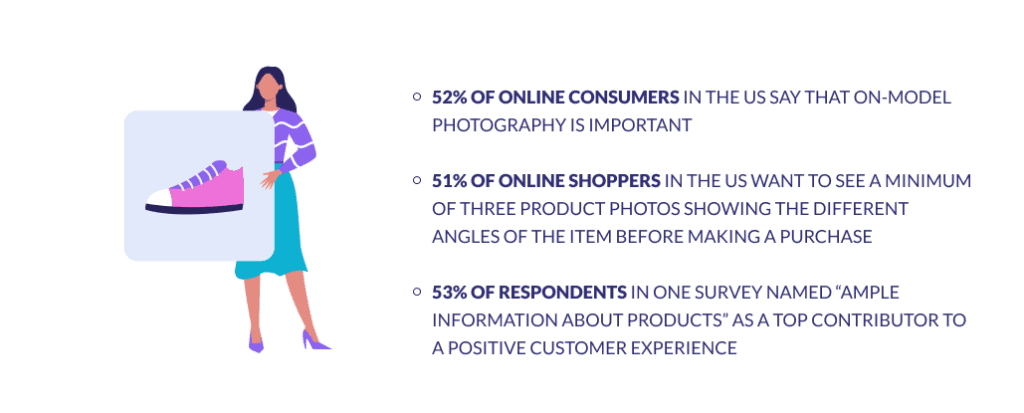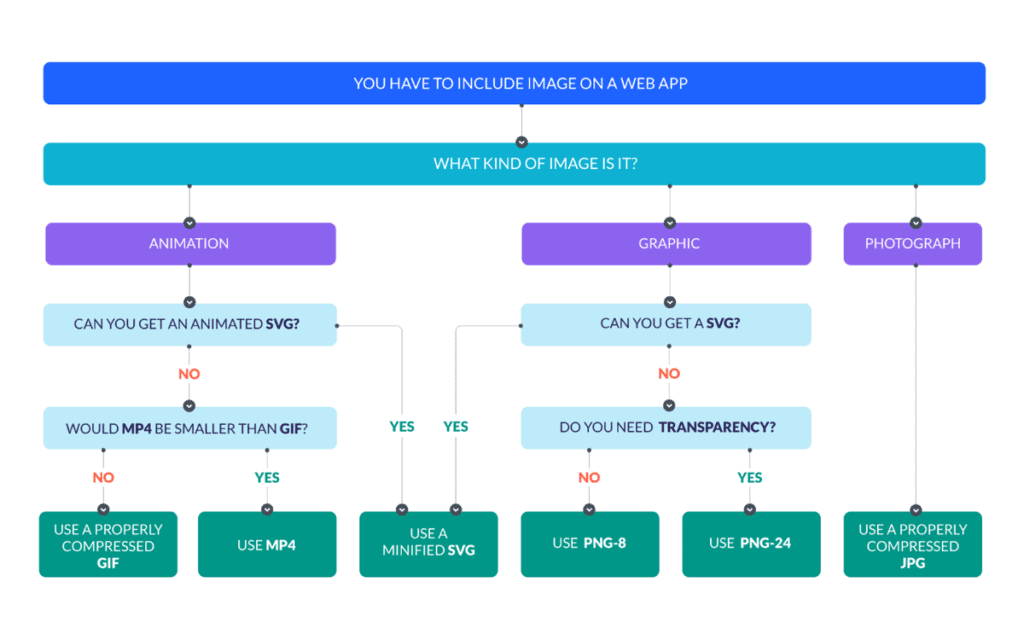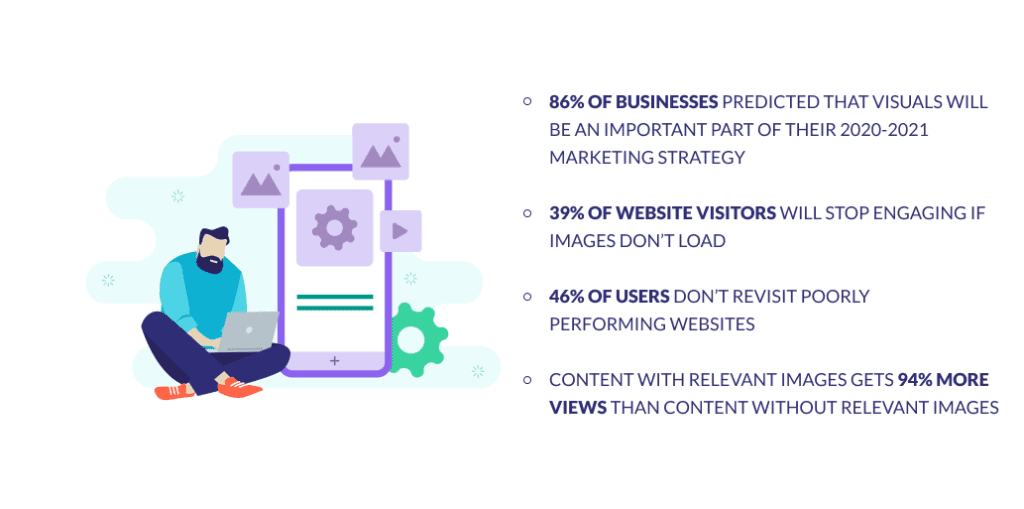Image Optimisation: Increase Ecommerce Conversions
The expression ““ image optimisation ” covers all of the modifications you can make to an image so that it both loads much faster and increases a websites’’ s ranking in online search engine outcomes.
.
Optimising images for much better load speed is everything about minimizing the image file size as much as possible without lowering its quality.
This procedure is called compressing an image, and wear’’ t concern– you put on ’ t requirement to be a tech whiz to do it!
.
We ’ ll talk more about compression later, as it ’ s still an crucial technique that digital material online marketers utilize to optimise site speed.
.
Optimising an image for much better online search engine results belongs to the more basic online search engine optimisation technique or SEO.
.
Image SEO, which we ’ ll discuss in this guide, covers all of the methods you can makean image more “ legible ” to online search engine.
. Why Does Image Optimisation Increase Conversions?
So, we” understand that image optimisation producesmuch better load speeds, efficiency and SEO. What does thathave to do with your conversion rate ?
.
For something, individuals won ’ t purchase from your site if they have a bad user experience– and image load times are a hugepart of that user experience.
’.
Even simply a one-second hold-up in load time lowers client – complete satisfaction by 16% .
. 
And for another, bad image SEO can stop consumers from even discovering your site material in the very first location.
.
Almost 70% of all online experiences begin withan online search engine, and more than 90 % of international traffic originates from Google Search, Google Images, and Google Maps.
.
So you ’ ll wish to make certain Google can comprehend your images completely!
.
Read on for the 8 leading ideas and techniques you can utilize to begin optimising your images now. That ’ s right– these are all modifications you can make yourself!
.1 – Avoid’Stock Images.
Stock images, while technically high quality, tend to look reallygeneric. Consumers choose more genuine and truthful visuals, and this has actually held true for a very long time.
.
Take – this case research study from 2011, for instance: when a research study laboratorychanged out a popularstock image for a real-life image of the test business ’ s creator, the conversion rate on that page leapt by over 34% .
.
In short, individuals wish to see the “ face ” behind your business’– whether that be your real face, a group shot of your group, and even an appearance behind the drape at your workplace setup.
. 
Plus, cutting stock images doesn ’ t imply you need to jeopardize on image quality.
.
While it ’ s real that bigger organizations can buy an expert photographer, smaller sized organizations (or anybody seeking tospending plan!) must have no issues taking top quality images with something as easy as a smart device electronic camera.
.
For example, if you ’ re shooting item images on your phone cam, you ’ llrequirement to:
. Get a white background to highlight your item. Keep in mind that white methods white since even a somewhat off-white colour technically counts as a shade of grey!Shoot close-up to reveal as a lot of the item ’ s informationas possible Use a great deal of light,’and put your light as close-up to the item as possible, so that the light entirely showers the item and keeps shadows to a minimum.
Personalised images are a fast method to raise your website design and increase your conversions.
.
78% of Americans addressed “ item images ” when asked what they search for in an online shop, so taking premium pictures is a fast win that you can achieve with little to no devices!
. 2 – Optimise Images Filename.
We ’ ve all done it– downloaded an image onto our computer system, and left the file name as a random string of numbers and letters to be puzzled by later on.
. “
But random image file names aren ’ t simply troublesome to us. When online search engine like Googlecrawl your’pages for info, they check out those file names to determine what the image has to do with.
.
That ’ s why a file name like “ females ’ s tee shirt blue ” is a lot more’handy than “ gMte5DJ34Qo ”!
. 3 – Compress the Image Files.
Image compression is a kind of information compression that encodes an image with less bits than the initial variation.
.
That may sound technical, however it implies making an image file smaller sized without compromising the image ’ s quality.
.
Compressed image sizes take “up less storage area, and they fill faster than uncompressed images– this is necessary for SEO, with efficiencyand site load speed being a ranking aspect on Google because 2018
.
So, we understand that image compression is necessary. The much better news is that it ’ s likewise simple.
. 
There are lots of totally free tools offered to optimise images for you in simply a couple of clicks, consisting of ImageResizer and TinyPNG .
.
To utilize these tools, all you need to do is submit your initial top quality images, let the platform do its magic, and after that download the compressed variations to utilize on your website.
.
If you ’ re utilizing WordPress, you can likewise utilize plugins to compress your images right there on-site.
.
In other words, you won ’ t need to go through the additional actions of submitting images to a third-party tool , redownloading them onto your computer system, and after that submitting them back to your site.
.
For example, Imagify is a plugin (with a totally free strategy!) that lets you upload and optimise images straight from your WordPress control panel– simply put, you can avoid the intermediary by submitting and compressing your images at the exact same time.
.4 – Choose the Right Image Formats.
Image files can be found in various formats depending upon their compression level, however this is really simple to alter.
.
Those compression tools we talked about earlier can likewise transform images to various file formats– and once again, this needs no technical understanding on your part!
.
In truth, it ’ s simply a matter of understanding which submit formats are best for which images.
.
Let ’ s begin with the most popular file formats:
. JPG is the very best format for headshots, item pictures, and other typically non-animated photographic images.JPG images have little file sizes, which implies youcan keep a number of them on one server. Due to the fact that it ’ s a greater quality formatthan JPG, png is the finest format for graphic images with elaborate styles. Simply keep in mind that PNG images are likewise bigger than JPGs, so utilizing a lot of them can start to affect your – page load times. SVG is the most “ responsive ” format,indicating SVG images can rapidly scale up and down to much better fit a site ’ s style. They ’ re finestfor elements like logos or aspects graphics logo designs need to display correctly require differentshow since of thisProperlyThroughout
Here ’ s a more detailed take a look at what to consider when selecting a file format:
.  5 – Add Alt Text and Image Titles.
5 – Add Alt Text and Image Titles.
Alt text means “ alternative text ” and is detailed text that assists users with visual problems comprehend what an image is portraying.
. When they aren ’ t loading or display screen properly, #ppppp> Alt text will likewise reveal up in location of images.
.
Alt-text is an important method to make your website more available and enhance your website ’ s user experience, which Google is positioning more focus on in 2021.
.
But excellent alt text likewise assists online search engine spiders comprehend what an image has to do with and its context within a page.
.
Good alt text is detailed and brief. – Think about the followingpicture:
. 
You may desire your alt text to state something like “ pastry shop counter with bread rolls ”. And if you ’ re utilizing software application like WordPress, you can set up SEO-specific plugins that make it simple to include alt text as quickly as you submit an image, like this:
. 
You ’ ll likewise see the choice to include an image title at “this phase, which is likewise an important part of image optimisation.
.
Image titles have a comparable function to imaging file names– they offer each image more context and make the subject clearer to online search engine spiders.
. 6 – Include User-Generated Content.
This point resembles what we stated about customising your photos.
Just as visitors wish to see the genuine individuals behind your website, they likewise wish to know that your clients are genuine individuals, too.
.
Including user-generated material on your site, such as client evaluations, is a terrific method to increase conversions: undoubtedly, 92% of consumers checked out online evaluations prior to purchasing an item.
.
It ’ s likewise an outstanding method toenhance the user experience that Google worths a lot.
.
Including images with client evaluations can assist you increase their possible as trust signals.
The probability of a purchase
.
A confirmed evaluation may consist of a headshot of each client, which can advise readers that they ’ re hearing from real-life purchasers.
. 7 – Make Use of Sitemaps.
A sitemap is a list of all the pages on your site and offers Google with important details about each page– for instance, when it was last upgraded.
.
Sitemaps likewise assist online search engine comprehend how your website is arranged and how various pages connect to each other.
.
Some site home builders , like Squarespace, will instantly produce a sitemap for you.And if you ’ re utilizing WordPress variation 5.5 or above, you can likewise immediately produce your sitemap.
But here ’ s the important things: you ’ ll still wish to download an SEO plugin to assist you personalize your sitemap due to the fact that this is how you ’ ll have the ability to consist of images on it.
.
By consisting of a page ’ s imagesas part of the info offered in your sitemap, you ’ re making it simpler for online search engine to comprehend what each page has to do with.
. 8 –Use a CDN..
CDN means material shipment network and describes a networkof web servers that are expanded all over the world. Utilizing a CDN can assist your pages pack much faster.
.
Using numerous servers throughout various areas can minimize the range in between a site visitor and the server where your images’are hosted.
.
There are a lot of CDNs out there to select from. Cloudflare is one example of a CDN, with over 150 information centres real estate servers all over the world. It has a standard totally free service offered that ’ s appropriate for smaller sized sites.
’. Last Thoughts.
Image optimisation is an essential method to establish your eCommerce site for success due to the fact that it causes much faster fill times and much better SEO efficiency.
.
In turn, that enhanced user experience and presence can assist increase your conversion rates .
.
The finest aspect of image optimisation is that you can do lots of it on your own, and in this guide, we ’ ve offered you the very best methods to begin today.
.
Here ’ s a fast wrap-up of what we ’ ve covered:
.Prevent stock images– reveal your character instead.Name the image files– inform online search engine what an image is all about.Compress the image files– decrease the file size without compromising the quality. Select the appropriate file format– keep in mind that various file types have various strengths.Add alt text and image titles– make your’pages more available, and offer more context for eachimage.Include user-generated material– increase brand-new clients ’ rely on your organization. Use sitemaps– utilize SEO plugins to include images to your sitemap. Utilize a CDN– minimize the range in between web visitors and web servers.
None of these ideas need any technical knowledge, and they can imply considerable advantages for youreCommerce company. Attempt a few of them today to optimise images, and let us understand how you get on!
.
Author Bio: Maura Monaghan is an author at Website Builder Expert, a resource devoted to assisting users get going online no matter theirexperience level. Her preferred subjects to cover consist of webhosting and material marketing , and she thinks that everybody can develop their own sensational site.
. 
The post Image Optimisation: Increase Ecommerce Conversions is by Stuart and appeared initially on Inkbot Design .
.
Read more: inkbotdesign.com
